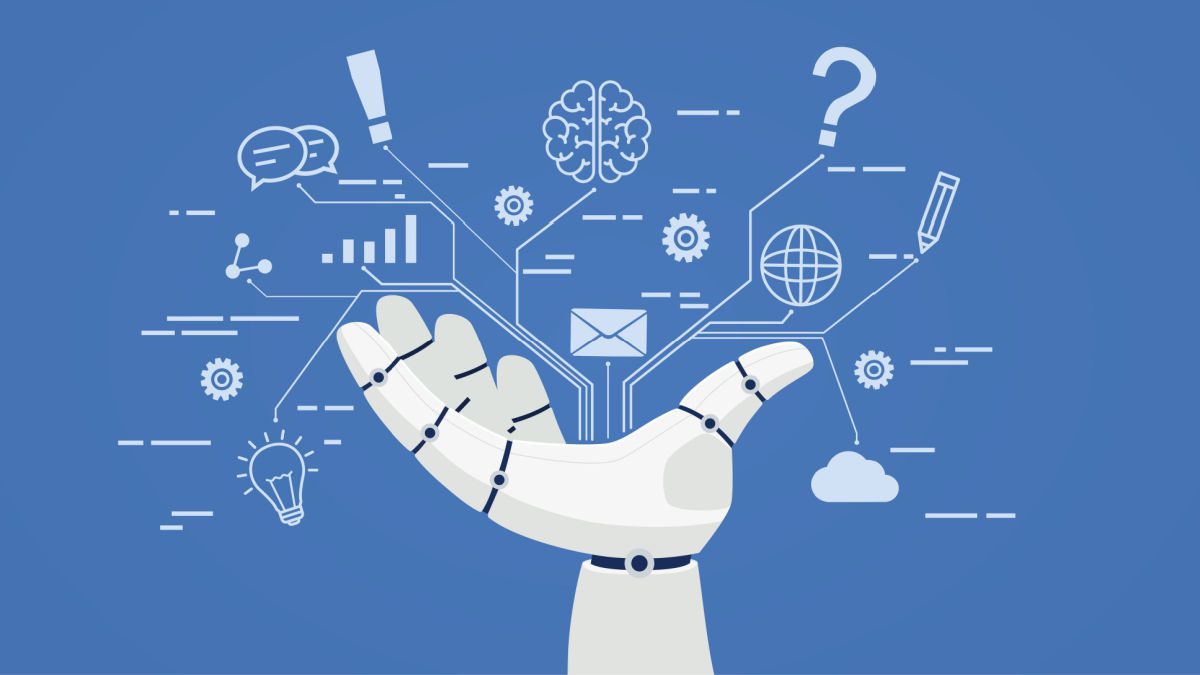Large language models (LLMs) have emerged as game-changers in the realm of marketing, revolutionizing the way brands communicate, engage, and understand their audience. These sophisticated AI systems possess the ability to comprehend and generate natural language at unprecedented scale and accuracy.
In an era where personalized, contextually relevant content is paramount, LLMs offer marketers a powerful tool to enhance their strategies and drive results. This article delves into the intricacies of LLMs, exploring their capabilities, applications, challenges, and best practices, providing marketers with essential insights to navigate the evolving landscape of AI-driven marketing.
Table of Contents
What are Large Language Models?
Large language models are advanced artificial intelligence systems designed to understand, generate, and manipulate human language at a scale previously unimaginable. These models utilize deep learning techniques, particularly transformer architectures, to process vast amounts of textual data and extract meaningful patterns and insights. Unlike traditional language processing systems, LLMs excel at handling unstructured data, allowing them to comprehend and produce human-like text with remarkable fluency and coherence.
The evolution of LLMs in AI represents a significant milestone in the field of natural language processing (NLP). From early rule-based systems to statistical approaches and neural networks, the development of LLMs has been characterized by continuous innovation and refinement.
Breakthroughs in machine learning algorithms, coupled with the exponential growth of computational power and data availability, have propelled LLMs to unprecedented levels of performance and sophistication. Milestones such as OpenAI’s GPT series and Google’s BERT have pushed the boundaries of what is possible in language understanding and generation.
Key Capabilities of Large Language Models
LLMs possess robust capabilities in natural language understanding (NLU), enabling them to comprehend the nuances of human communication. Through deep learning techniques, LLMs analyze and interpret textual input, extracting semantic meaning, entity relationships, and sentiment. This understanding allows LLMs to perform tasks such as language translation, sentiment analysis, and information extraction with a high degree of accuracy.
Text Generation
One of the most remarkable capabilities of LLMs is their ability to generate coherent and contextually relevant text. By leveraging learned patterns from vast amounts of training data, LLMs can produce human-like prose, essays, code, and more. This text generation capability has profound implications for content creation, automated writing, and conversational agents, enabling marketers to streamline their content production processes and engage with audiences on a more personalized level.
Contextual Awareness
LLMs excel at capturing and leveraging contextual information to enhance language understanding and generation. Through mechanisms such as attention mechanisms and positional encodings, LLMs can effectively contextualize input text, taking preceding and subsequent context into account to inform their predictions and responses. This contextual awareness allows LLMs to produce more coherent and relevant outputs, adapting their language to match the tone, style, and subject matter of the input.
Adaptability and Learning
LLMs demonstrate remarkable adaptability and learning capabilities, continuously improving their performance over time through exposure to new data and experiences. Through techniques such as fine-tuning and self-supervised learning, LLMs can refine their language models to better capture domain-specific knowledge and user preferences.
This adaptability enables LLMs to stay abreast of evolving language trends. They can adapt to changes in user behavior and deliver more tailored and effective solutions in various applications, including marketing.
Content Creation and Curation
Large language models have revolutionized content creation by offering automated solutions for generating a wide range of content types, including articles, product descriptions, emails, and more. By analyzing vast amounts of data, LLMs can produce high-quality, relevant content at scale, saving marketers valuable time and resources. Whether it’s creating blog posts, reports, or promotional materials, LLMs enable marketers to maintain a consistent flow of engaging content to capture and retain audience attention.
They empower marketers to deliver personalized content experiences tailored to individual preferences, interests, and behaviors. By leveraging data insights and user interactions, LLMs can dynamically generate customized content recommendations, product suggestions, and marketing messages. This level of personalization enhances user engagement, fosters brand loyalty, and drives conversion rates by delivering content that resonates with each user on a personal level.
These models play a crucial role in optimizing social media marketing efforts by generating compelling posts and advertisements optimized for various platforms and target audiences. They can craft catchy headlines, write persuasive ad copy, and generate engaging visuals.
LLMs can streamline the content creation process and maximize the impact of social media campaigns. They can also analyze social media data to identify trending topics, sentiment, and audience preferences, enabling marketers to stay ahead of the curve and capitalize on emerging opportunities.
Customer Service and Support
LLMs power intelligent chatbots and virtual assistants that enhance customer service and support capabilities. These AI-driven agents can engage with customers in natural language, providing real-time assistance, answering frequently asked questions, and guiding users through various processes. By leveraging LLMs, businesses can offer round-the-clock support, streamline customer interactions, and resolve inquiries efficiently, improving overall customer satisfaction and loyalty.
They enable businesses to automate the process of responding to customer queries and feedback across various channels, including email, social media, and messaging platforms. By analyzing incoming messages, LLMs can generate personalized responses that address customer concerns, provide relevant information, and facilitate problem resolution. This automation not only saves time and resources but also ensures consistent and timely communication with customers, enhancing the overall customer experience.

Market Research and Analysis
LLMs excel at analyzing sentiment across large volumes of textual data, enabling marketers to gauge public opinion, track brand perception, and monitor sentiment trends in real-time. By analyzing social media conversations, customer reviews, and other online sources, LLMs can identify positive and negative sentiment signals, allowing marketers to assess the effectiveness of marketing campaigns, detect potential issues, and make data-driven decisions to optimize brand messaging and positioning.
These models assist marketers in identifying emerging trends and topics of interest within their target market. By analyzing online conversations, news articles, and social media discussions, LLMs can detect patterns and identify key themes that resonate with consumers. This insight enables marketers to capitalize on trending topics, tailor their content and messaging accordingly, and stay relevant in a rapidly evolving marketplace.
LLMs provide valuable insights into consumer behavior, preferences, and purchase intent through the analysis of textual data. By examining customer reviews, feedback, and social media interactions, LLMs can uncover actionable insights that inform product development, marketing strategies, and customer engagement initiatives. Whether it’s understanding consumer sentiment, identifying pain points, or predicting future trends, LLMs empower marketers with the data-driven insights they need to make informed decisions and drive business growth.
Bias in LLMs
One of the primary ethical concerns surrounding LLMs is the presence of bias in their output. LLMs learn from vast amounts of data, which may contain biases inherent in the source material or introduced during the training process.
These biases can manifest in various forms, including gender, racial, cultural, or ideological biases, leading to skewed or discriminatory outcomes. Marketers must be vigilant in identifying and mitigating bias in LLMs to ensure fair and equitable treatment of all individuals and communities.
The use of LLMs in marketing raises significant privacy concerns related to the collection, storage, and processing of personal data. LLMs rely on large datasets, including user-generated content and behavioral data, to generate personalized recommendations and targeted advertisements.
However, the indiscriminate use of personal data without proper consent or safeguards can infringe upon individuals’ privacy rights and undermine trust in brands. Marketers must prioritize transparency, consent, and data protection measures to uphold user privacy and comply with regulatory requirements.
Accuracy and Reliability
LLMs have the potential to disseminate misinformation or propagate fake news if not properly trained or monitored. Due to their ability to generate human-like text, LLMs can inadvertently produce misleading or inaccurate content, leading to reputational damage and a loss of credibility for brands. Marketers must implement rigorous fact-checking processes, content moderation policies, and mechanisms for identifying and correcting misinformation to maintain trust and integrity in their communications.
LLMs rely on vast amounts of data to operate effectively, making them susceptible to data breaches and security vulnerabilities. The unauthorized access or misuse of sensitive data can have severe consequences for both marketers and consumers, including identity theft, financial fraud, and privacy violations.
Marketers must implement robust data security measures, such as encryption, access controls, and regular audits, to protect against cyber threats and safeguard the confidentiality and integrity of customer information.
Integration with Existing Marketing Strategies
While LLMs offer valuable capabilities for automating and optimizing marketing processes, they should complement, rather than replace, human creativity and intuition. Marketers must strike a balance between leveraging LLMs and maintaining the human touch. By integrating human expertise with AI-driven technologies, marketers can deliver more authentic, personalized experiences that resonate with their audience.
The adoption of LLMs in marketing requires marketers to acquire new skills and knowledge to effectively leverage these technologies. Marketers must undergo training and upskilling initiatives to understand the capabilities and limitations of LLMs, interpret data insights, and implement strategies that maximize their impact.
Fostering a culture of continuous learning and experimentation is essential for staying abreast of emerging trends, refining strategies, and driving innovation in AI-driven marketing initiatives.
Best Practices for Leveraging LLMs in Marketing
Incorporating large language models into marketing strategies offers tremendous potential for enhancing engagement, personalization, and efficiency. However, to maximize the benefits of these powerful AI tools, marketers must adhere to a set of best practices that ensure effective implementation and utilization.
Here are some key strategies for leveraging LLMs in marketing:
Understand your audience and goals
Before integrating LLMs into marketing initiatives, it’s crucial to have a deep understanding of your target audience and overarching business objectives. Conduct thorough market research to identify audience demographics, preferences, and pain points. Clearly define your marketing goals, whether it’s increasing brand awareness, driving website traffic, or boosting sales conversions. By aligning LLM-driven initiatives with specific audience segments and desired outcomes, marketers can tailor content and messaging to resonate with their target audience effectively.
Invest in high-quality data
The success of LLM-driven marketing campaigns hinges on the quality and relevance of the data used to train and fine-tune these AI models. Invest in acquiring high-quality datasets that are representative of your target audience and industry domain. Ensure that the data is clean, structured, and annotated to facilitate accurate language understanding and generation. Additionally, leverage diverse data sources, including customer feedback, social media interactions, and market trends, to enrich the training data and capture a comprehensive view of consumer behavior and preferences.
Regularly monitor and evaluate performance
Continuous monitoring and evaluation are essential for assessing the effectiveness and impact of LLM-driven marketing initiatives. Establish key performance indicators (KPIs) aligned with your marketing goals, such as engagement metrics, conversion rates, and return on investment (ROI).
Utilize analytics tools and platforms to track the performance of LLM-generated content, measure audience engagement, and identify areas for optimization. Regularly analyze performance data to glean insights into audience behavior, content effectiveness, and campaign performance, allowing marketers to refine strategies and drive continuous improvement.
Stay updated with advancements
LLM technology is rapidly evolving, with ongoing advancements and innovations shaping the capabilities and applications of these AI models. Stay abreast of the latest developments in LLM research, including new architectures, training techniques, and applications. Follow industry publications, attend conferences, and engage with AI communities to stay informed about emerging trends and best practices.
Experiment with cutting-edge LLM tools and platforms to explore new possibilities for content creation, personalization, and customer engagement. By staying proactive and adaptive to technological advancements, marketers can maintain a competitive edge and leverage LLMs to drive innovation and growth in their marketing strategies.
The Future of Marketing
Integrating large language models (LLMs) into marketing strategies represents a transformative opportunity for brands to enhance engagement, personalization, and efficiency. By understanding their audience, investing in high-quality data, monitoring performance, and staying updated with LLM advancements, marketers can unlock the full potential of these AI-driven tools.
However, it’s essential to navigate ethical considerations, ensure data privacy, and maintain a balance between human creativity and AI automation. With careful planning and implementation, LLMs offer marketers a powerful means to connect with audiences, drive conversions, and stay ahead in an ever-evolving digital landscape.
Ready to evolve your marketing strategy with cutting-edge AI technology? Explore the possibilities with EvolveDash!



















